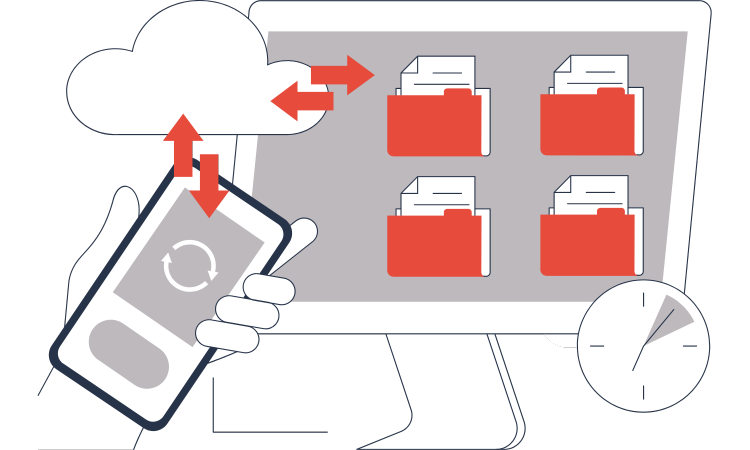
The rapid pace of technological advancement in recent years has brought profound changes across various areas of our lives. As we navigate through this dynamic landscape, it becomes crucial to stay attuned to emerging trends that shape the trajectory of industries, particularly in the realm of geospatial technology.
In this article, we dive into the pivotal trends of 2024 that demand our attention, offering insights into how they are reshaping the technological landscape and influencing diverse sectors.
1. Artificial Intelligence (AI)
Artificial Intelligence (AI) stands at the forefront of technological innovation. In the realm of geospatial technology, AI and Machine Learning (ML) are changing how we gather, analyze, and visualize spatial data.
AI facilitates image recognition, enabling the identification of patterns within vast datasets and the analysis of imagery such as aerial photographs. Moreover, speech recognition capabilities enhance interaction with devices, streamlining data collection processes in the field.
Moreover, AI-driven advancements are redefining technical documentation, now crafted with AI applications in mind.
Did you know?
Despite AI’s seeming widespread, many companies are still in the early stages of their AI journey. According to O’Reilly’s report, about 38% of businesses have been using it for only less than a year. This means that we are merely witnessing the dawn of AI’s transformative potential across diverse domains.
2. Virtual and Augmented Reality (VR and AR)
Virtual and Augmented Reality (VR and AR) technologies are experiencing an upsurge in adoption, offering novel applications across various industries, including the geospatial sector. These immersive technologies provide unparalleled insights and perspectives, facilitating enhanced data visualization and analysis.
In business contexts, VR and AR enable stakeholders to:
- Visualize products and solve design dilemmas before the product development stage.
- Test apps in a more realistic setting.
- Enhance collaborative modeling in industries such as Architecture, Engineering, and Construction (AEC) through the integration of Building Information Modeling (BIM) technology with VR capabilities.
3. High-quality data
As organizations leverage AI for complex analyses and decision-making processes, it becomes crucial to ensure the integrity and reliability of data. This underscores the importance of strict data quality measures to underpin AI-driven initiatives effectively.
You can read more about data quality in our article, “How can you ensure the high quality of data and why is data validation so crucial?”.
4. Cybersecurity
The ubiquitous digitization of processes highlights the critical importance of cybersecurity. According to Acronis Mid-Year Cyberthreats Report 2023, cyber threats are on the rise. Another report, KPMG5, states that limited budgets and a lack of qualified cybersecurity professionals pose significant challenges. This prompts businesses to seek external expertise and services to safeguard their digital assets.

5. Internet of Things (IoT) and real-time data analysis
Internet of Things (IoT) refers to a network of physical devices embedded with sensors and interconnected via the Internet, facilitating real-time data exchange and analysis. Leveraging AI in conjunction with IoT accelerates data processing and enhances analytical capabilities, particularly in industries such as:
logistics
agriculture
healthcare
industrial sector
The industrial sector is experiencing rapid growth in the realm of IoT. Companies are leveraging IoT technology to seamlessly integrate machines and industrial devices embedded with sensors, enabling comprehensive data collection. This capability proves invaluable for tasks such as operation monitoring and management, enhancing efficiency and productivity.
Moreover, IoT is gaining popularity in areas such as city network management, street lighting optimization, and water management. This application aligns with the vision of Smart Cities.
By combining IoT and GIS technologies, businesses can accurately position objects and conduct real-time analyses of extensive datasets. This integrated approach facilitates efficient data integration, empowering organizations to swiftly analyze data collected from device sensors and derive actionable insights.
6. Digital Twins
Digital Twins are indispensable tools for modeling and simulating physical assets and processes. By creating virtual replicas of physical objects, such as telecommunications networks or industrial infrastructure, organizations can streamline maintenance, optimize logistics, and conduct predictive simulations. This process enhances operational resilience and efficiency.
7. Automation
Automating repetitive tasks becomes a crucial part of product development, as it streamlines business processes and enhances operational efficiency.
However, implementing automation requires addressing infrastructure complexities and ensuring adherence to data regulations. This underscores the importance of comprehensive solutions that harness the full potential of data assets.
You can read more about automation in our article “Automated data processing: key benefits and use cases“.
8. Sustainable technologies
In tandem with technological innovation, the imperative for environmental sustainability gains importance. Therefore, it is crucial to develop solutions that not only drive profits but also minimize their environmental footprint.
IT companies are increasingly incorporating eco-friendly design practices into their processes. This includes optimizing energy usage, recycling components, and reducing CO2 emissions. Embracing an ecological approach to technology also involves promoting energy-saving solutions, such as cloud computing and energy recovery systems.

9. Spatial Intelligence
Spatial data analysis and location analytics emerge as indispensable tools for informed decision-making across diverse industries, including FMCG, CPG, banking, finance, and insurance. From retail site selection to insurance risk assessment, spatial intelligence enhances operational efficiencies and drives strategic insights, emphasizing the transformative power of geospatial technologies.
Learn more about using spatial data for insurance: ”Effective use of geospatial data – applying location analytics in the insurance industry”.
10. Cloud Computing
In today’s competitive market, companies strive to offer flexible and tailored services, necessitating equally adaptable solutions to support their operations.
Maintaining software and IT infrastructure can pose challenges and constraints on business development. To alleviate this burden, software providers offer cloud-based solutions. Notable examples include Google Cloud Platform and FME Flow Hosted by Safe Software. In the cloud licensing model, service providers are responsible for infrastructure maintenance, software updates, data storage, and security.

11. New data storage and processing methods
The exponential growth of data necessitates adaptations in storage and processing methods. Many organizations, especially in the geospatial industry, are transitioning their resources to the cloud. This shift is driven by the rising popularity of native cloud data formats. Cloud technology enhances data interoperability, minimizes processing delays, and simplifies data management. Additionally, the emergence of edge computing allows for data processing at the edge of storage, eliminating the need for data transfers and associated delays.
Ensuring data resilience against cyberattacks is another critical aspect of data storage. Solutions for data processing and storage must prioritize data safety, guarding against leaks and theft while facilitating secure data sharing with authorized applications.
The rapid expansion of technologies, particularly in the geospatial realm, is reshaping industries with an intriguing new landscape. Advancements in AI, IoT, Cloud Computing, Cybersecurity, VR, and AR are driving sophistication across sectors. However, this technological evolution highlights the need for sustainable solutions that minimize environmental impact.
As businesses confront the challenges of 2024 and beyond, success hinges on their agility in adopting innovations. Additionally, selecting the right tools and technological partners—ones equipped with the expertise to align solutions with business needs—is critical to staying competitive in a rapidly evolving market.
Explore how we can empower your organization to thrive in the evolving geospatial landscape. Contact us to discover tailored solutions that unlock your full potential.












